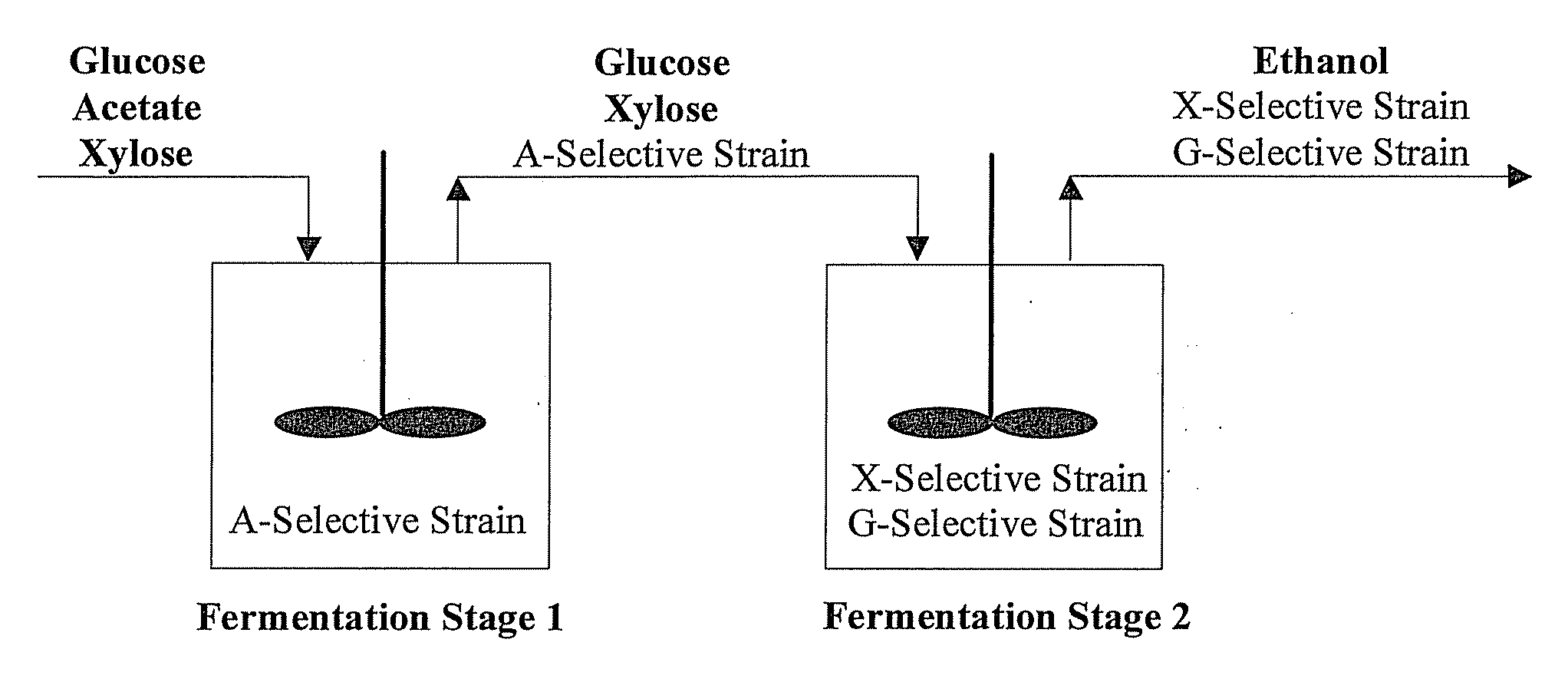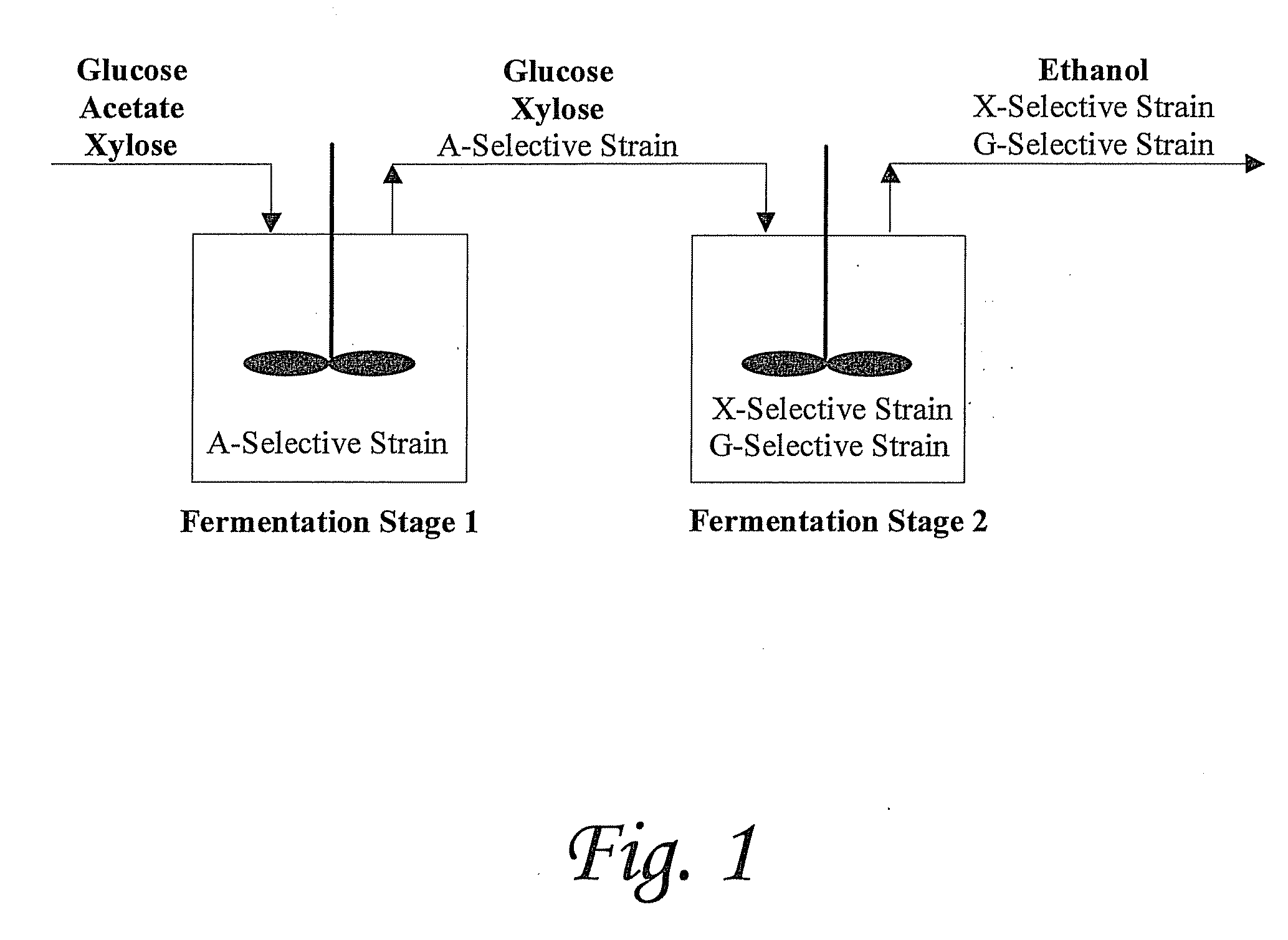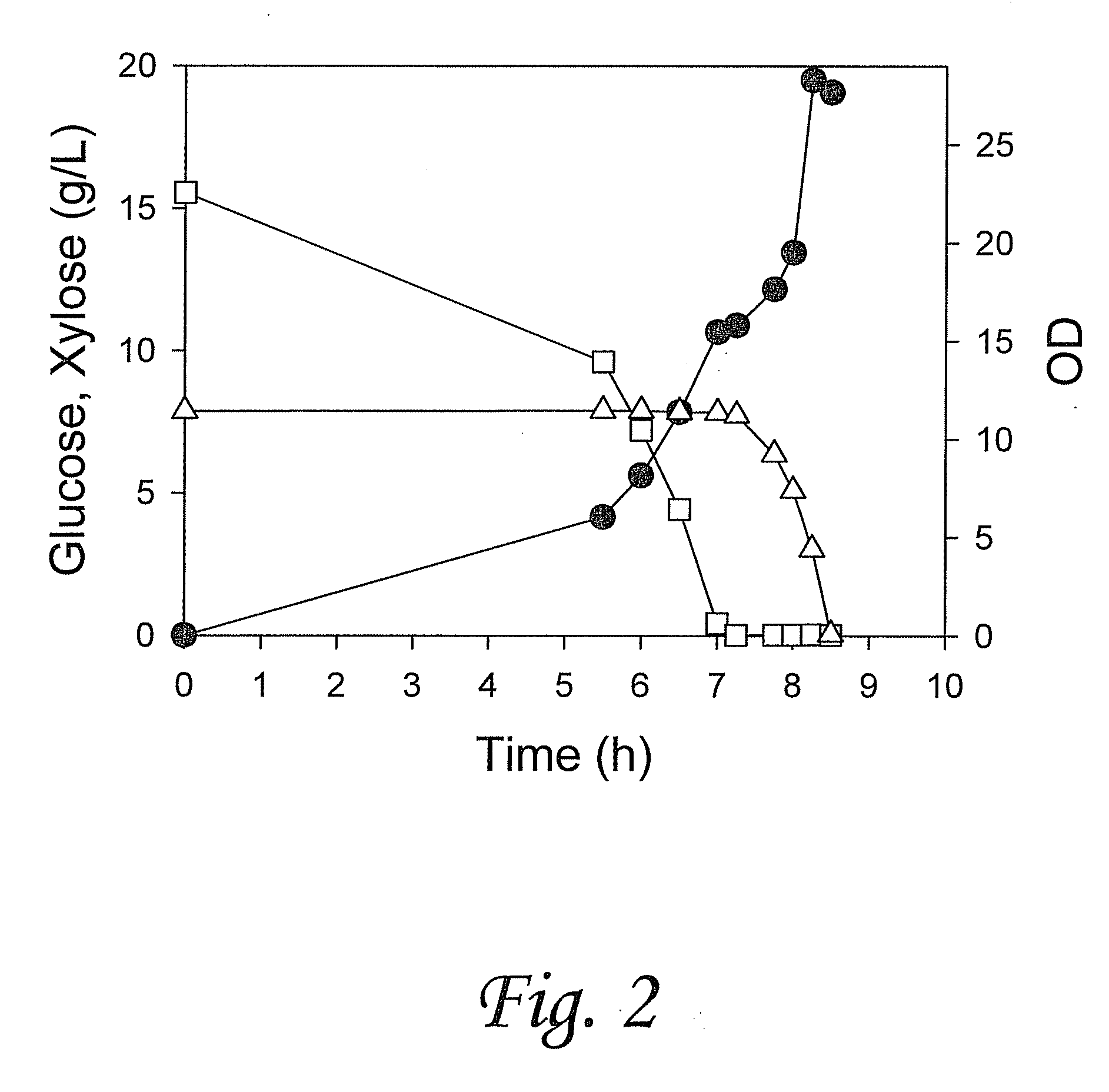Substrate-selective co-fermentation process
a cofermentation process and substrate technology, applied in the direction of biochemical apparatus and processes, fermentation, biofuels, etc., can solve the problems of complex mixtures, inability to prevent linearly metabolizing one sugar, and inability to efficiently use agricultural biomass for biochemical production, etc., to achieve the effect of optional enhancement of biochemical production
- Summary
- Abstract
- Description
- Claims
- Application Information
AI Technical Summary
Benefits of technology
Problems solved by technology
Method used
Image
Examples
example 1
Co-Fermentation Strategy to Consume Sugar Mixtures Effectively
Introduction
[0141]We report a new approach for the simultaneous conversion of xylose and glucose sugar mixtures into products by fermentation (Eiteman et al., 2008, J. Biol. Engineering, 2:3). The process simultaneously uses two substrate-selective strains, one which is unable to consume glucose and one which is unable to consume xylose. The xylose-selective (glucose deficient) strain CGSC5457 (ZSC113) has mutations in the glk, ptsG and manZ genes while the glucose-selective (xylose deficient) strain ALS1008 has a mutation in the xylA gene. By combining these two strains in a single process, xylose and glucose are consumed more quickly than by a single-organism approach. Moreover, we demonstrate that the process is able to adapt to changing concentrations of these two sugars, and therefore holds promise for the conversion of variable sugar feed streams, such as biomass sources including lignocellulosic hydrolysates.
[0142]...
example 2
Consumption of Acetate by Escherichia Coli
[0167]E. coli readily consumes acetic acid as a sole carbon / energy source (El-Mansi et al., 2006, Curr. Opin. Microbiol. 9:173), but it generally will not consume acetate in the presence of other substrates from which the cells can derive more energy. Of course, the presence of acetate diminishes the rates at which other substrates are consumed. However, E. coli can be forced to grow on acetate and prevented from consuming glucose or xylose (for example) by knocking out the genes which encode for glucose and xylose consumption. We refer to such a strain as “acetate-selective” because of the three substrates, acetate is its exclusive carbon nutrient. When exposed to a hydrolysate containing acetate, xylose and glucose, only the acetate will be consumed. This approach is merely an extension of the substrate-selective concept introduced above for xylose and glucose mixtures.
[0168]We tested whether acetate could be selectively removed from a mi...
example 3
[0171]Rather than try to develop a single organism to accomplish all the process design goals required for lignocellulosic conversion, our novel approach uses multiple strains to do tasks efficiently and independently. Note that no competition exists in the envisioned co-culture (in Stage 2, FIG. 1). Competition involves multiple species competing for the same substrate. In this case, the strains each seek only their specific substrate and, being otherwise the same, do not interfere with each other. Thus, potential shortcoming from competition in a “mixed-culture” bioprocess is avoided.
[0172]There are several significant advantages that the envisioned continuous / fed-batch process has for the elimination of acetic acid and the simultaneous conversion of sugar mixtures, as exemplified by xylose and glucose. First, because the acetate-selective strain cannot grow in the absence of acetic acid, these cells will ultimately lyse in the second stage. By lysing, the ce...
PUM
| Property | Measurement | Unit |
|---|---|---|
| OD | aaaaa | aaaaa |
| OD | aaaaa | aaaaa |
| concentration | aaaaa | aaaaa |
Abstract
Description
Claims
Application Information
 Login to View More
Login to View More - R&D
- Intellectual Property
- Life Sciences
- Materials
- Tech Scout
- Unparalleled Data Quality
- Higher Quality Content
- 60% Fewer Hallucinations
Browse by: Latest US Patents, China's latest patents, Technical Efficacy Thesaurus, Application Domain, Technology Topic, Popular Technical Reports.
© 2025 PatSnap. All rights reserved.Legal|Privacy policy|Modern Slavery Act Transparency Statement|Sitemap|About US| Contact US: help@patsnap.com



